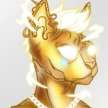Archaeologists have discovered at least twenty burial complexes - they may be related to the legend of King Arthur!
Archaeologists have discovered at least twenty burial complexes - they may be related to the legend of King Arthur!

According to a new study, tombs discovered in the British Isles belonged to British rulers, their families, and powerful individuals. Researchers believe they date from the so-called Dark Ages, which lasted from the late fifth century until the mid-tenth century AD.
The new research was published in the scientific journal Journal of the Royal Society of Antiquaries of Ireland. In it, researchers described finding tombs in which kings and their families from the early medieval period were buried. Archaeologists believe the discovery is a breakthrough that sheds new light on our knowledge and understanding of this historical period in the British Isles.
Researchers have found at least twenty burial complexes
Researchers were able to identify at least twenty burial complexes where kings and queens were supposedly buried. Each of these contained up to five graves. Preliminary analysis indicated that they date from the fifth and sixth centuries.
This is a period in British history about which little is known, due to scant sources. So far only nine Anglo-Saxon burial sites have been found, but only one belonged to a native British king.
Britain was conquered by Anglo-Saxon tribes in the 5th century
In the 5th century, the conquests of British lands by the Germanic Angles, Saxons and Jutes began. As a result of the wars and conquests, the native English, or Celtic Britons, were forced to migrate north and west of their country. Archaeologists and historians have so far known the least about the Britons. More legends and myths have grown up around this people than reliable knowledge has been accumulated.
A recent discovery may change that. Scientists claim that the remains found in the tombs belong to the Celtic Britons. Importantly, we are not talking about farmers or merchants, but Old English kings and rulers, which makes the research even more exciting.

The burial sites of kings are located where King Arthur once ruled
The new research was overseen by Ken Dark, a professor in the Department of History and Archaeology at the University of Reading. He and his team of researchers found these remarkable necropolises in areas of western England and Wales. Today, they are located in the counties of Somerset and Cornwall, among others. Historians claim that this is where the legendary King Arthur is supposed to have ruled.
Prof. Dark argues that the reason why many burial sites of Brythonic rulers have not yet been found is because of the differences between them and the Anglo-Saxons when it comes to burying the dead. The tribes that conquered Britain in the fifth century buried their dead in a much more elaborate manner.
The tombs of the Britons were much more modest than those of the Anglo-Saxons
The archaeologist admits that the necropolises of the Anglo-Saxon rulers contained ornate and expensive gifts that were offered as sacrifices. In contrast, the tombs of the Britons were very simple and modest. This is why it is so difficult to identify which remains belonged to royal families. However, scientists have finally succeeded.
“The royal tombs of the Britons were extremely common. They did not differ from the burial places of ‘normal’ people “— says Prof. Dark. Christian Britons, who still remembered “the Roman Empire, wanted to keep their religion and called the Anglo-Saxon tribes pagans”, recalls Prof. Dark.
The only remains of a Brythonic ruler were previously found in northwest Wales. They belonged to Cadfan, who ruled the Welsh kingdom of Gwynedd, which was founded around 450 AD. The king died around 625, and historians know of him mainly through an inscription carved on a stone at his burial site.
After analyzing thousands of tombs from the 5th century, researchers have noticed some slight differences
Prof. Dark and a group of researchers undertook a breakneck task. They decided to analyze thousands of archaeological sites and burial places of people living in the west of Britain and Ireland. The researchers say that although most of the graves look modest and similar, there are slight differences that may indicate the higher status of the dead.
Archaeologists say that the burial complexes that are supposed to have belonged to kings are larger than standard.
“We have found a lot of the same modest burial sites, but there is a negligible proportion of them that are larger and more imposing,“’” Professor Dark points out.
That’s not all. Everything indicates that only a few necropolises were designed in such a way that the graves were to be located in the middle of a rectangular or circular enclosure. As was the case, among others, near the ruins of Tintagel Castle, in north Cornwall. This is where King Arthur was supposed to have been born.
Source: Journal of the Royal Society of Antiquaries of Ireland






Comments
There are no comments for this story
Be the first to respond and start the conversation.